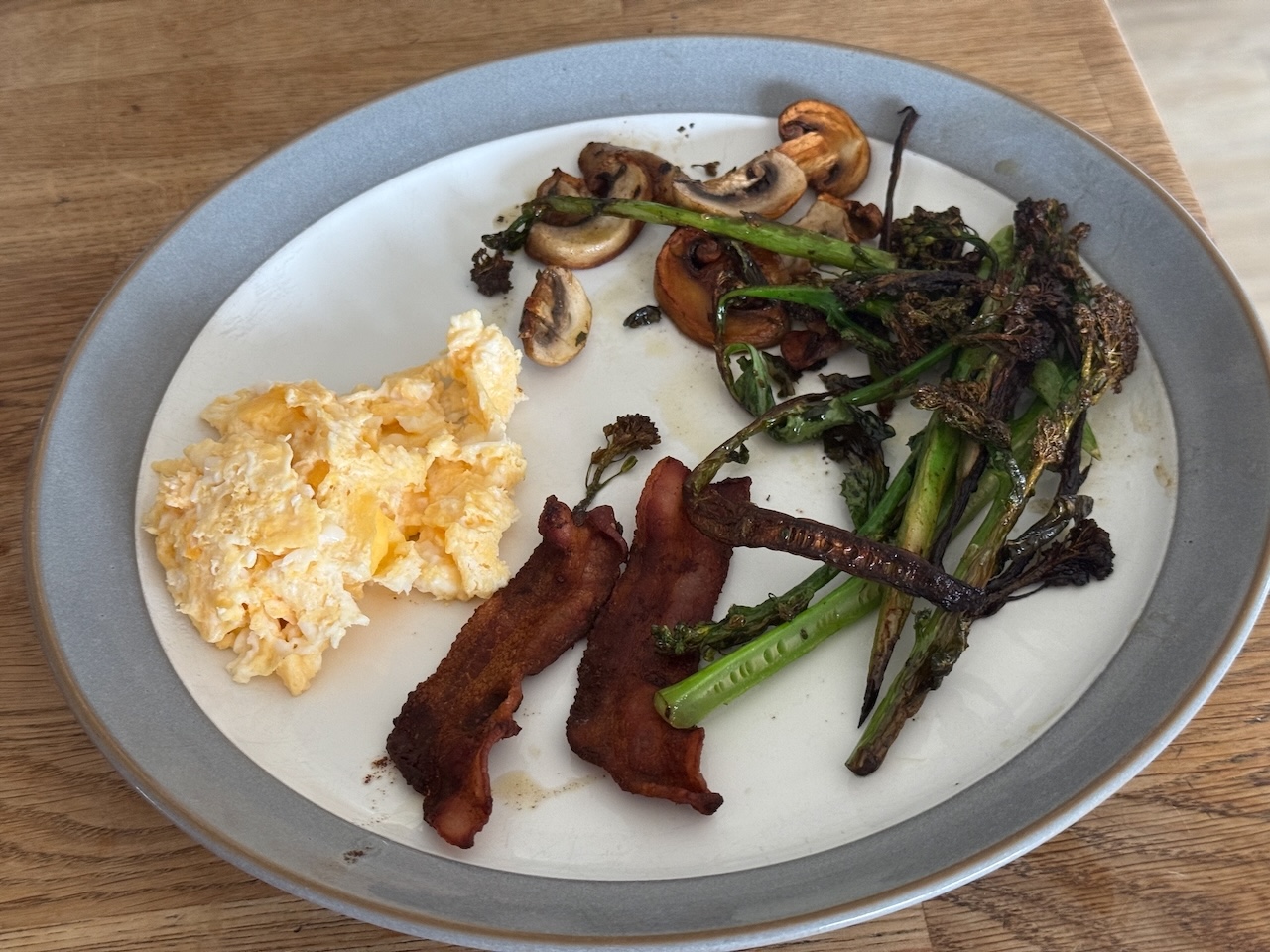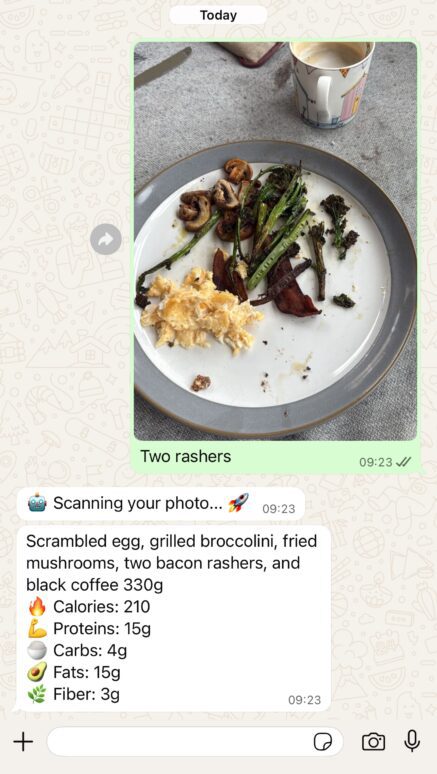
New service set to speed up MRI scans for heart patients with pacemaker
A new high quality MRI scanning service launched today by VCL and available at SCVC.
Providing independent clinical excellence since 2005
Posted on Sunday September 14, 2025 in Metabolic Health

An article written by Dr Edward Leatham, Consultant Cardiologist
Tags: VAT, GLP-1, Inflammation, Diet, Arthritis, search website using Tags to find related stories.
For busy people, or to tune in when on the move, Google Notebook AI audio podcast and an explainer slide show are available for this story beneath.
The opinions expressed in this article are my own and do not (yet) represent a consensus view.
When most people think of a cooked breakfast, they picture something indulgent — bacon, eggs, toast, maybe pancakes or juice. But my version of a cooked breakfast that I treat myself to a few times a week is carefully designed to help reduce visceral fat (VAT), improve satiety, and support stable energy levels throughout the morning. Here’s how I do it — and why it works.
While preparing the most important meal of the day, I try to remember to drink plenty of tea and water, a great way to start the day, which helps both hydration and satiation. I then start cooking some crispy streaky bacon, but not how you might expect. I fry it in rapeseed oil, a source of healthy monounsaturated fat. I discard the rendered saturated fat — I don’t eat it. Then, I add broccoli and mushrooms, also sautéed in rapeseed oil until lightly caramelised. Finally, I make scrambled eggs, which add high-quality protein to the meal.
So what’s actually on my plate?
I use Dr Shape, a transformative AI based food analysis app, that gives me an idea (within 60 seconds of uploading an image) of the macronutrients on my plate. This is important to ensure I get close to my daily protein intake target of 0.8 g/Kg or more and also maintain a small caloric deficit – both required to hit my healthy VAT target.
I previously had a metabolic health assessment, CT FAI and low dose VAT scan, so am aware that like so many patients we see, I have coronary inflammation, some plaque, non diabetic hyperglycaemia (with glucose spikes) due to carbohydrate sensitivity as well as an unhealthy visceral adipose tissue (VAT) index to tackle – a phenotype that, without an intervention, spells trouble ahead. However, I am confident that with a personalised plan and specific VAT, waist circumference and LDL goals in place, my cardiovascular risk can be managed and effective prevention achieved. My patients also seem to like hearing that their cardiologist practices what he preaches.

This combination of protein and fat is key. Together, they trigger the release of GLP-1, a gut hormone that promotes satiety and helps regulate blood sugar¹. It’s the same hormone targeted by GLP-1 receptor agonist medications used for weight loss and diabetes — but in this case, I’m stimulating it through food.
The broccoli provides a modest amount of complex carbohydrate, which digests slowly and doesn’t spike my blood sugar. This is important because glucose spikes lead to insulin spikes, and insulin is the hormone that promotes fat storage — especially in the abdomen² ³.
What about my cholesterol and LDL, I can imagine hearing my patients say? Whenever possible, I like to remind them that dietary fats are minor contributors to blood LDL in most people. If a lower LDL is required to prevent or treat coronary disease, it can rarely be reached through dietary restriction alone. Due to prevalent mutations in the PCSK9 pathway, most people requiring effective prevention of coronary heart disease will only achieve the required LDL (<1.6 mmol/l) by taking a statin or other medication to help overcome such gain of function mutations.
Let’s face it, personally I believe that an occasional crispy bacon rasher, even while taking a statin, is going to add a ‘feel good factor ‘ without doing much harm.
By contrast, a typical low fat, high-carb breakfast like toast or a bowl of cereal will spike glucose and insulin levels, even if the calorie count is similar. I have seen this firsthand using continuous glucose monitoring (CGM) — my cooked breakfast results in a minimal glucose rise, while toast or juice sends it shooting up⁴.
The protein in my breakfast is broken down into amino acids, some of which require energy to metabolise⁵. Unlike carbohydrates and fats, protein can’t be stored — excess is either used or excreted⁶. That means less energy is left over to be stored as visceral fat.
Some amino acids enter the Krebs cycle as fuel, but because I have included a small amount of carbohydrate, this process is balanced and doesn’t overwhelm the system. My body runs efficiently without being overloaded.
The fats I eat — especially the healthy fats from rapeseed oil — are metabolised into free fatty acids, which fuel my brain and heart⁷. These fats also help maintain hormonal balance and cell membrane integrity, which are essential for long-term health.
I don’t include toast, pancakes, or fruit juice in my breakfast. These foods may be culturally “normal,” but they spike blood sugar quickly, followed by a crash. That crash often leads to mid-morning hunger, fatigue, or sugar cravings³. Instead, I might have a few berries or a pear — skin on — if I want something sweet. I avoid smoothies and juice, which deliver a rapid glucose hit without fibre to slow it down.
I feel full and focused all morning. I don’t need a snack. My blood sugar remains steady, and my body runs on an appropriate amount of ‘rocket fuel’ (glucose) mixed with fat and protein for caloric intake rather than riding the sugar-insulin rollercoaster.
And most importantly, this approach helps reduce my visceral fat — the harmful fat wrapped around the organs — which is a key target for preventing heart disease, diabetes, and even certain cancers⁸.
So yes — I eat a cooked breakfast to burn fat, not store it.
And after breakfast? Well then I spend 10 minutes on a simple muscle resistance routine, to help those amino acids build skeletal muscle mass!
References